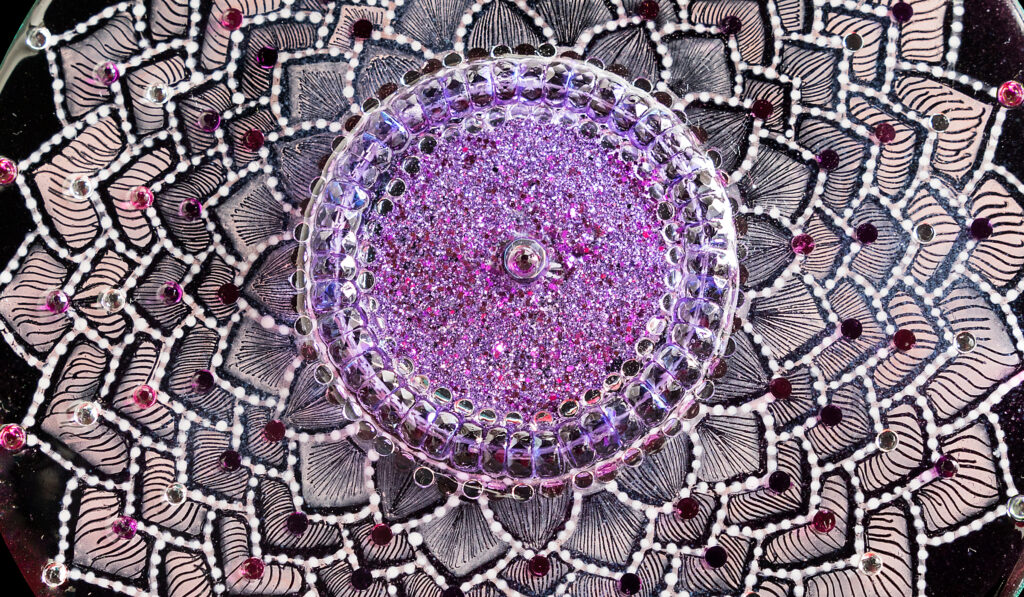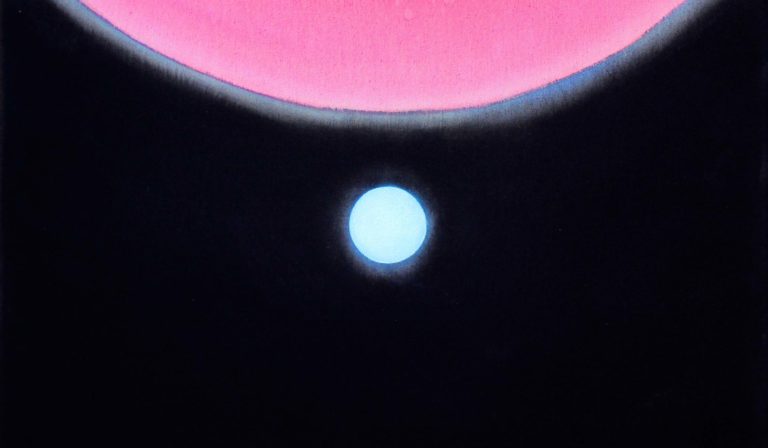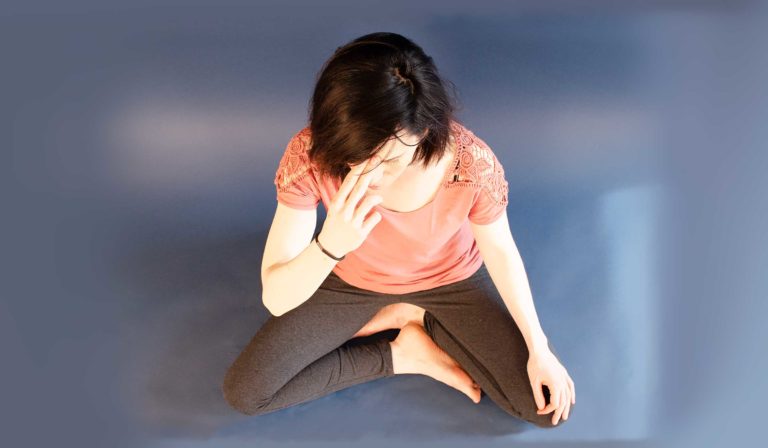The chakras are among the most famous concepts of yoga. But much of the ideas people have about chakras don’t come from ancient traditions. Instead, it originates from 20th-century western spirituality. As a yoga practitioner and teacher, I am interested in knowing to what extent chakras are real and how much we have made up. I want to understand how present-day yogis experience chakras and how other spiritual traditions relate to them. If you are interested in that as well, then you are in the right place.
Chakras were originally templates for meditation
Sanskrit texts on yoga describe chakras as templates for meditation. Ancient yogis visualised chakras to connect with the subtle energy system that lies beyond the physical body. They are markers for raising awareness rather than something existing in the physical or even the energy dimension.
In the oldest tantric sources, chakras are visualisations. They are not something that exists inside us. These source texts don’t treat the chakras in themselves as real. However, chakra visualisation is intended to influence subtle dimensions that are beyond the physical world. These subtle dimensions are considered real.
Suppose the chakras had been there to describe a precise, subtle anatomy readily discoverable in deep meditation. In that case, we could expect different yoga traditions to have a similar understanding of where to situate chakras and how many there are. But this is not the case.
The seven chakra system that is prevalent today is just one of many. Some ancient texts on yoga list only a few chakras, while others describe more than a dozen. Some yoga traditions don’t talk about chakras at all.
The text Viveka Martanda refers to the chakras as “places of meditation”.
“The penis, the anus, the navel, the heart and above the place of the uvula, the space between the eyebrows and the aperture into space: these are said to be the places of the yogi’s meditations.”
Viveka Martanda
Ancient yogis also call chakras “adharas” or “padmas”. Adhara means support (as in support for meditation), and padma means lotus. And indeed, when visualising chakras, images of lotuses are standard.
In addition, yogis would also visualise Sanskrit syllables written on the lotuses’ petals. Furthermore, they would bring forth images of gods and symbols connected to gods. They would also mentally place symbols and mantras referring to the elements in the chakras.
Contemporary ideas regarding the chakras
During the 20th century, westerners interested in Indian spirituality have superimposed ideas on the tantric chakras that were not present in the Sanskrit sources. They tend to present the mental creations relating to the chakras as a metaphysical reality instead of visualisations. In addition, they link them to gemstones, rainbow colours, emotions, endocrine glands, planets, ailments and christian angels, among other things.
Such ideas stem, for example, from the theosophist Charles Ledbeater, the psychologist Carl Gustav Jung and later new age pundits like Anodea Judith.
Chakras and the energy system
The chakras in yoga were initially related to nadis, or energy channels. Major chakras are found along a crucial energy channel in the spine, the Sushumna nadi. In yogic source texts, vital energy, or prana, flowing in the nadis is related to the breath.
When you practice yoga poses, pranayama and yogic meditations (like the methods I teach here on Forceful Tranquility) you become sensitive to subtle energy sensations. Therefore, I wanted to know how advanced practitioners in my tradition feel this energy since that might give clues about the chakras.
I set up a survey and asked 76 experienced yogis in my tradition about it. On average, these yogis had 18 years of experience.
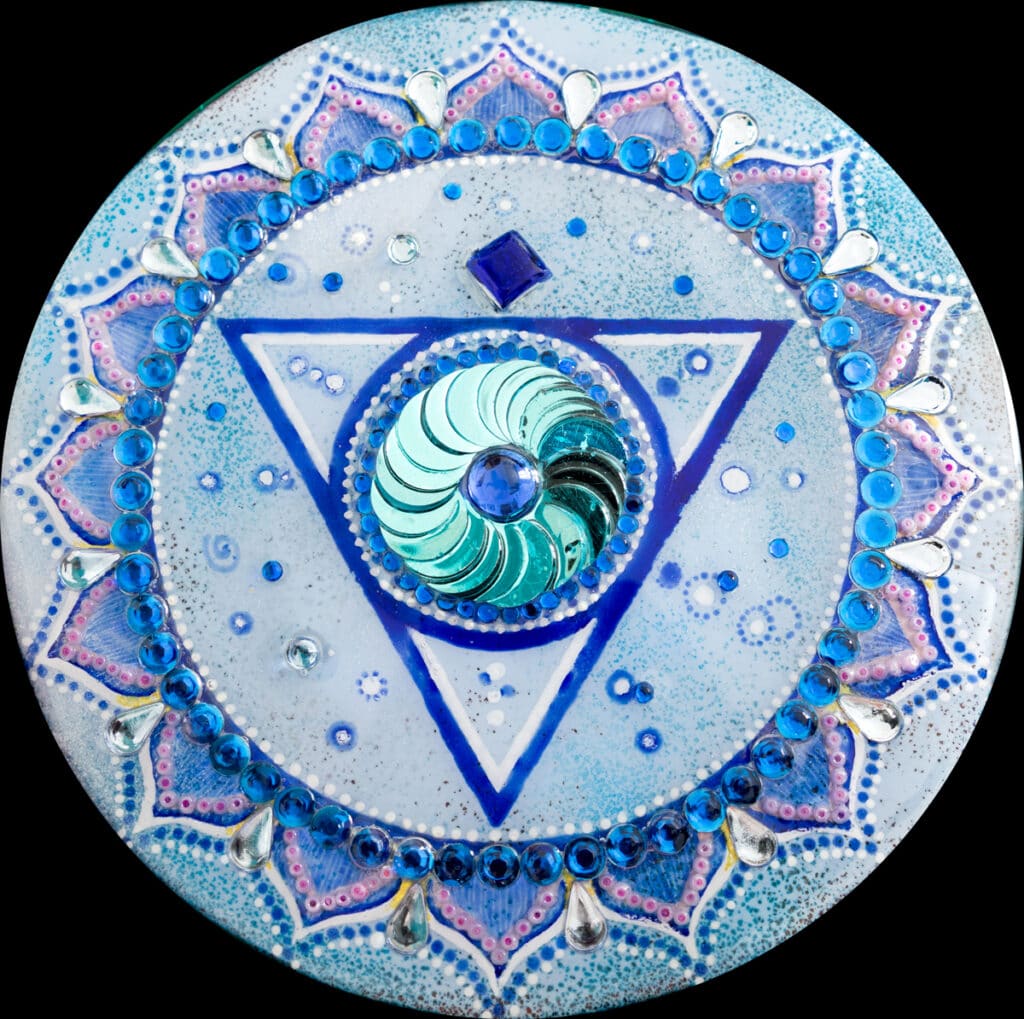
My respondents reported having energetic feelings both in the spine and in the front of the torso. In addition, they reported having feelings of energy in the hands and the feet. They described that they felt prana as pulsations, heat, vibrations, flowing sensations and light.
The chakra points correspond to locations where my respondents tended to feel energy. For example, many yoga practitioners feel sensations of tingling energy at the perineum, the seat of the root chakra. However, the yogis in my survey did not exclusively perceive energy in the points we connect to chakras. They felt it elsewhere as well.
Want to know more about my survey on prana? Read the complete report here >>>
The spinal cord appeared to be of particular importance. Many of the yogis in my study had distinct experiences of energy isolated to the spine. A highly experienced yoga teacher with 30 years of experience expressed his sensations of life force in the spine in the following way:
“In an extreme form: as if a high voltage electric cable is attached to the base of the spine and another at the top of the head. But usually more as a tingling movement or pulse. “
The role of chakras in kundalini awakenings
A sudden surge in energy is called kundalini awakening. Yogic source texts describe how the goddess kundalini rises as a flow of energy that moves up the spine. Such experiences are pretty common to yogis. Among the respondents in my energy survey, 57% had experienced a kundalini rising at least once.
People who have had energetic awakenings can give even more clues to how the subtle energy system functions and why ancient yogis focused on specific locations in the body.
Here are a few anecdotes.
A friend of mine experienced a sudden energy surge while meditating during a yoga retreat. Energy rose from the bottom of her spine to the heart area. The kundalini rising brought her into an altered state of consciousness that lasted several months. During this time, her primary identity shifted away from her separate self towards universal consciousness.
Another friend had a profoundly transforming experience that involved what he describes as an explosion of energy in the heart. Interestingly, the Upanishads describe how the pranic conduits, the nadis, begin in the heart and spread from there.
Another yoga teacher I know experienced a transforming kundalini rising when he was young. He was practising a forward bend yoga pose when he suddenly felt energy gushing up his spine. The flow of energy stopped in the belly area. He says he became super sensitive after this experience and would feel other people’s emotional and energetic states.
Yet another example of a powerful energy experience is a woman who told me she was having intercourse when energy rushed up along her spine and through her head. She felt as if she followed the flow upwards and out of her body. She came to a place where she communicated with a higher being. The experience was powerful but confusing.
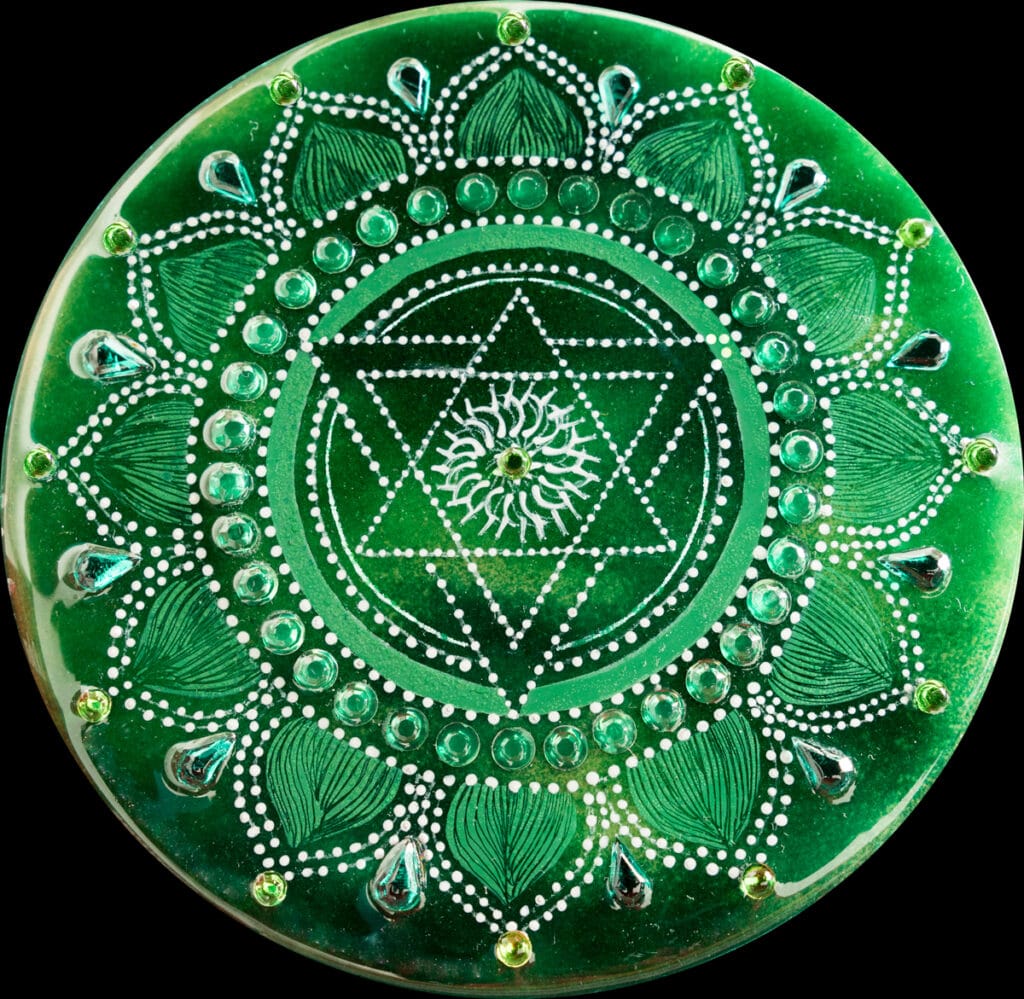
Chakras and granthis
The mention of energy rising and ending in certain places, such as the heart area, is noteworthy. There is a link here to something that yogis call “granthis”. A granthi is thought to be a knot that blocks energy.
There are three such knots. The first one, Brahma granthi, is situated in the area of the root chakra. The second is Vishnu granthi which is believed to be in the manipura area, behind the navel. The last one, Rudra granthi, is situated in the middle of the head.
The anecdotes above support the idea that energy risings can have endpoints. Perhaps experiences like these are what lies behind the notion of granthis. And maybe they also give clues to the location of chakras.
According to yogic scriptures, the goal of hatha yoga is to bring kundalini to sahasrara chakra at the top of the head. However, based on anecdotes, kundalini risings that involve energy moving through the top of the head are not necessarily more beneficial. I think that we have to be humble and acknowledge that there is a lot we don’t know. We should not have blind trust in information from ancient sources; instead, consider it critically but open-mindedly.
Chakras and Chinese medicine
The yoga tradition is not the only tradition describing a subtle energy dimension. Another one that does so is traditional Chinese medicine. Acupuncture is one of Chinese medicine’s most widely used methods. It is a recognised healing method even in the west. Acupuncture acts on the meridians, conduits for qi, a concept similar to that of prana.
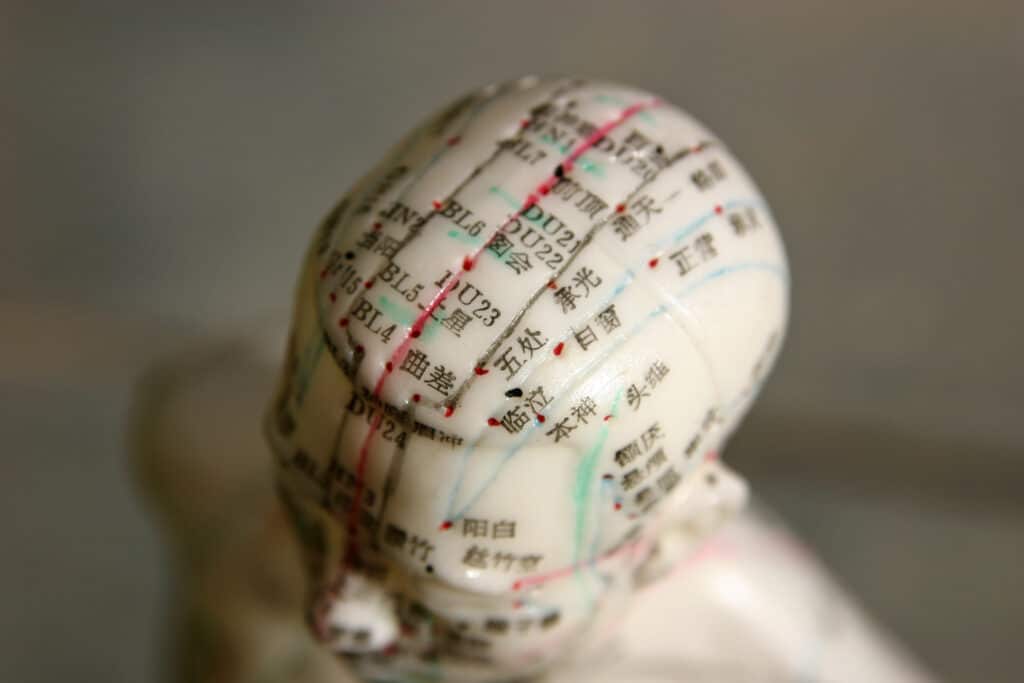
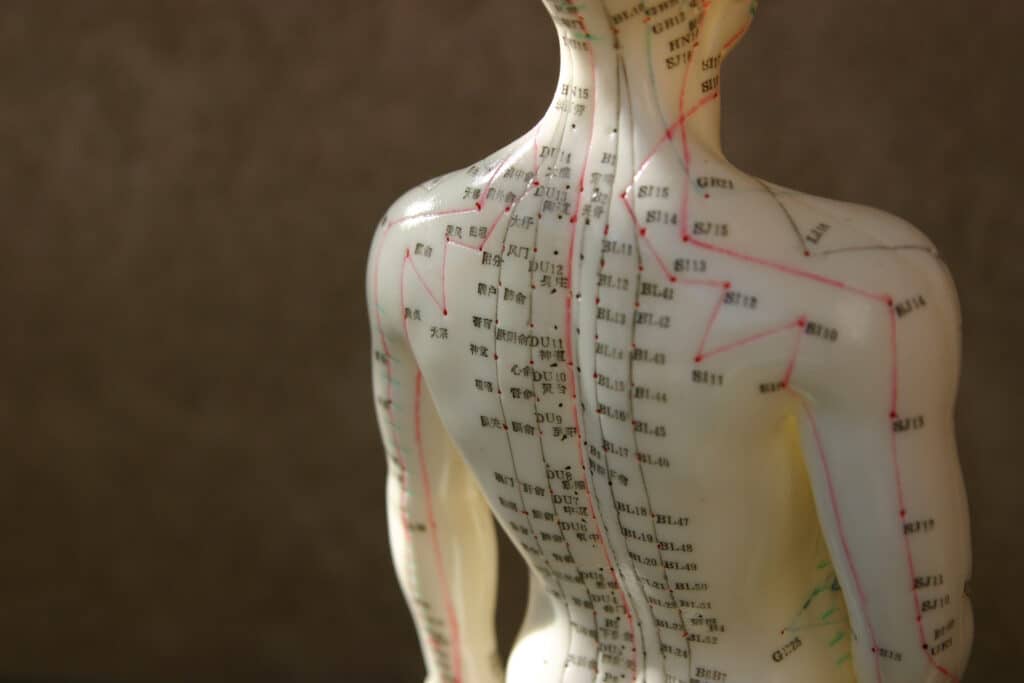
Traditional Chinese medicine is mainstream in China, and it’s taught at universities. A Chinese doctor I know, is a graduate of a top university in Wuhan. I asked her if, according to Chinese medicine, there are connection points where meridians interconnect. I wanted to know if any such points correspond to the locations of primary chakras.
She told me that Chinese medicine recognises many crucial interconnections between meridians—the two most essential ones being at the top of the head and behind the neck. These two points do correspond to sahasrara and vishuddhi chakra.
Vibratory centres in Hopi mythology
If there is something objective and solid behind the chakras, we could expect it to be known worldwide. It turns out that there are references in other ancestral traditions that have striking resemblances. The best example is perhaps the mythology of the Hopi Indians. Hopi mythology associates spiritual qualities to specific locations in the body in a fashion that resembles chakras.
According to the Hopis, there are spiritual or vibratory centres along a vertical axis in the body. The first one is at the top of the head, which corresponds to the fontanelle. According to them, this is where the soul enters the body at birth and leaves at death. As the fontanelle hardens, they think, we gradually lose our natural connection to the universe.
The next vibratory centre is inside the head. The third lies in the throat, and the fourth is in the heart. The last vibratory centre is at the solar plexus. These points all correspond to the exact locations associated with chakras from today’s standard seven chakra system.
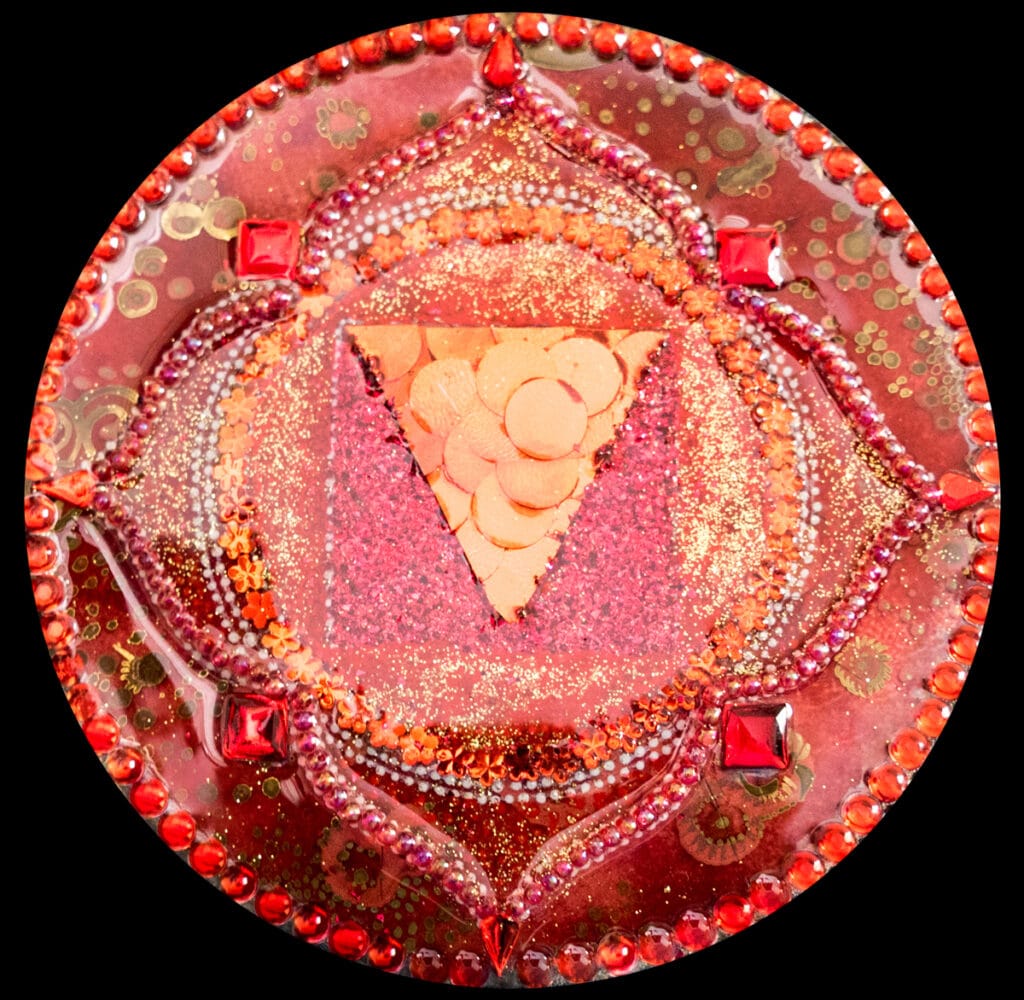
Experiences of energy in deep meditation
Yoga practitioners report feeling subtle sensations in the locations associated with the chakras. However, people speak about feelings of energy in other places as well. For example, in my energy study, respondents reported energetic sensations in their hands.
Yogis believe that prana underlies the physical dimension, including within the body. Thus you should be able to tune into prana anywhere. It is just a question of where you focus. If you direct your focus to the chakras, which yogis often do, you will feel prana there. If, on the other hand, you focus on another body part, you could feel that area alive and flowing with energy as well.
Vipassana meditators experience energy like this during long retreats with 10 hours plus of body awareness per day. As they scan their bodies in minute detail with unbroken attention for hours without fail, they begin to experience the prana that sustains it.
Chakras and emotions
Today chakras frequently get associated with different emotions. This is perhaps not surprising since people feel emotions in the body. Certain places in the body are more linked to specific emotions than others. The best example is love that most people associate with the heart. And as it turns out this is the location of anahata chakra.
In an interesting study from 2013, researchers exposed 701 subjects to emotionally charged words, stories, movies and facial expressions. The scientists asked the participants to indicate the body areas where they felt increased activity due to the emotional material. In case they felt decreased activity in other areas, the participants indicated that as well.
The researchers aggregated the results into heatmaps. As you can see, these heatmaps show that different emotions influence distinctly by overlapping body parts. The locations where we feel emotions appear to relate to the areas of the major chakras. However, this study does in no way support that specific emotions are related to particular chakras.
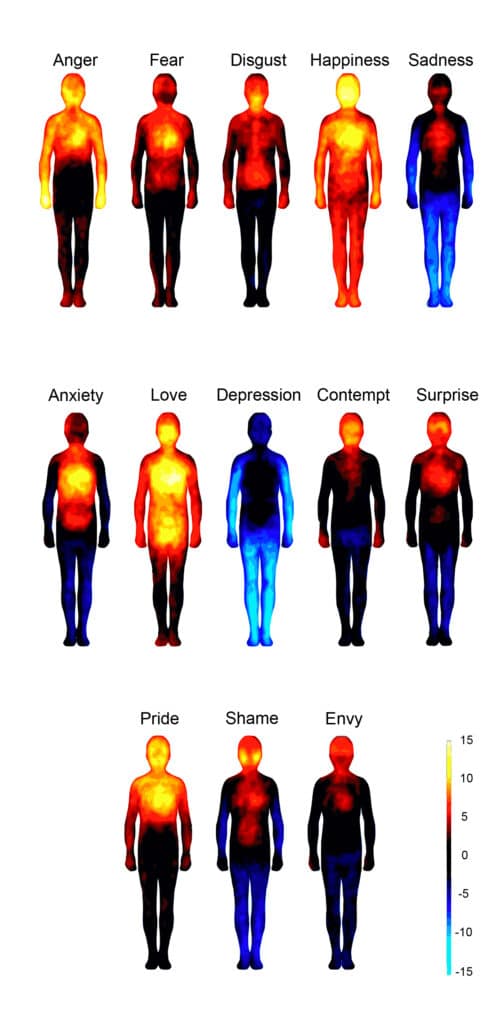
As mentioned before, ancient yogis did not associate specific chakras with distinct emotions. Nevertheless, it is interesting to consider where we feel emotions. I believe that they are not only linked to our physical body but in addition to our bodies of vital energy and thoughts. If chakras are real, we could expect them to play a role in emotions as well.
And that brings us to another fascinating topic.
Chakras and the five sheets
In Vedantic philosophy, there are five sheets (koshas). One way to think of them is as the layers of an onion. You can also think of them as intertwined layers of different densities.
The first sheet is the physical dimension. It is called the sheet of food (annamaya kosha), the dimensions where everything eats and can be eaten.
Next is the sheet of vital energy (pranamaya kosha) followed by the one of mind, or thought (manomaya kosha). Beyond the mind stuff there is a sheet of even more subtle intuitive intelligence (vijnanamaya kosha. And beyond that, the layer of pure bliss (anandamaya kosha).
The energy conduits linked to chakras are in the domain of pranamaya kosha. However, many yoga practitioners think of chakras as senses and communication centres in the psychic realm. If that is the case, they would have to be rooted in the more profound koshas.
The more subtle the sheets are, the less they are localised and dependent on the body. Mystics describe the subtle body as an oval sphere around the body. Therefore whatever is solid about psychic centres, it is likely to be fluid and nonlocal. So fixing spiritual powers to precise locations in the body might not even make sense.
Does science confirm the existence of chakras?
Chakras are not confirmed by science. Though some individual researchers have worked on the topic, Hiroshi Motoyama, for example. On the other hand, much research has been done on phenomena we associate with chakras, such as altered states of consciousness, telepathy, clairvoyance and healing.
New fields of science are emerging. Subjects that were taboo just a few decades ago can now be studied. At the same time, technology is becoming more and more refined. I think it is just a question of time before scientists begin to understand the mechanisms behind the subtle dimensions of the human body.
The day scientists can map our energy bodies, I believe it will become clear why the chakra locations have been so crucial for yogis.
Key takeaways
- There is not only one chakra system but several.
- The chakras are not real in the sense that they represent a subtle but objective reality.
- Ancient yogis visualised chakras to trigger psychic processes.
- There appear to be energetic and psychic functions related to the areas where some significant chakras are situated.
